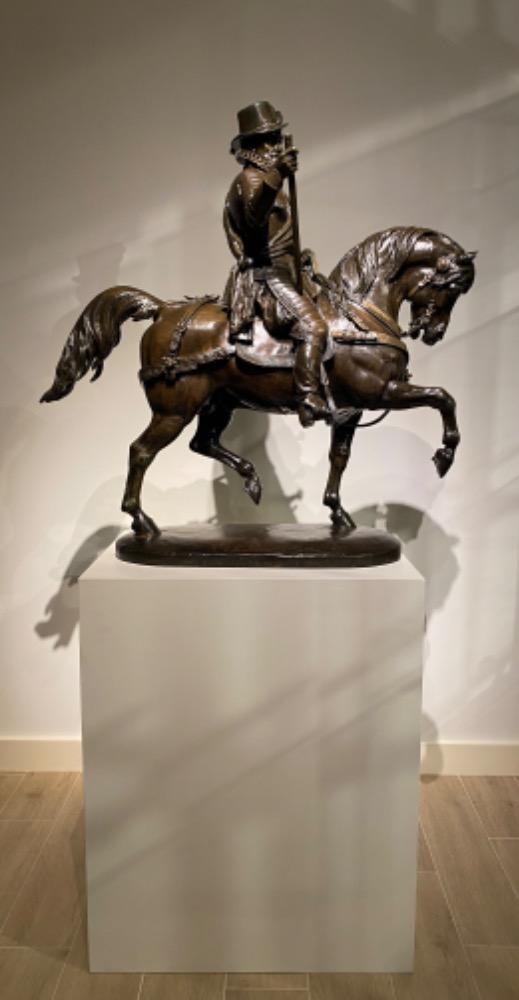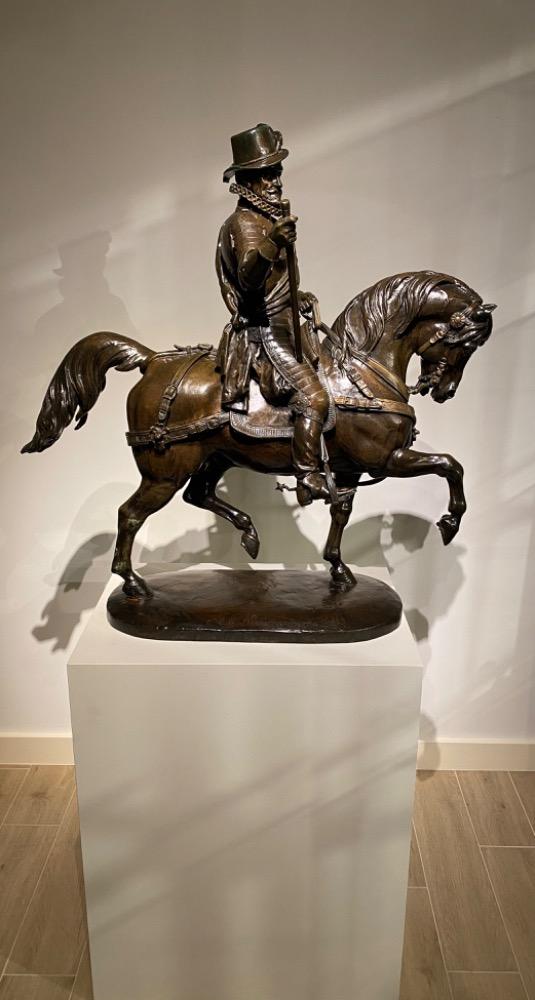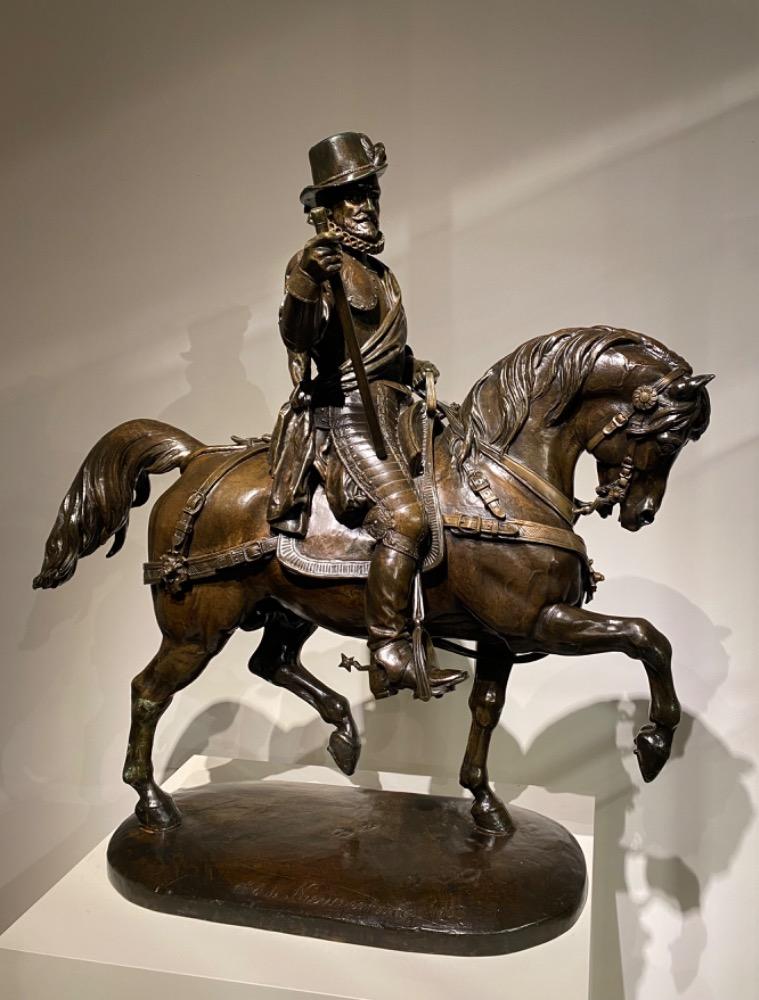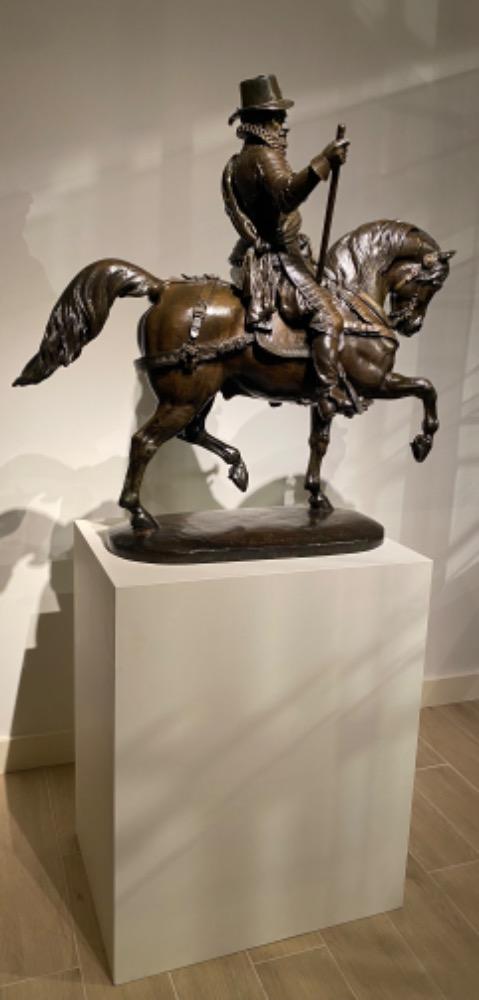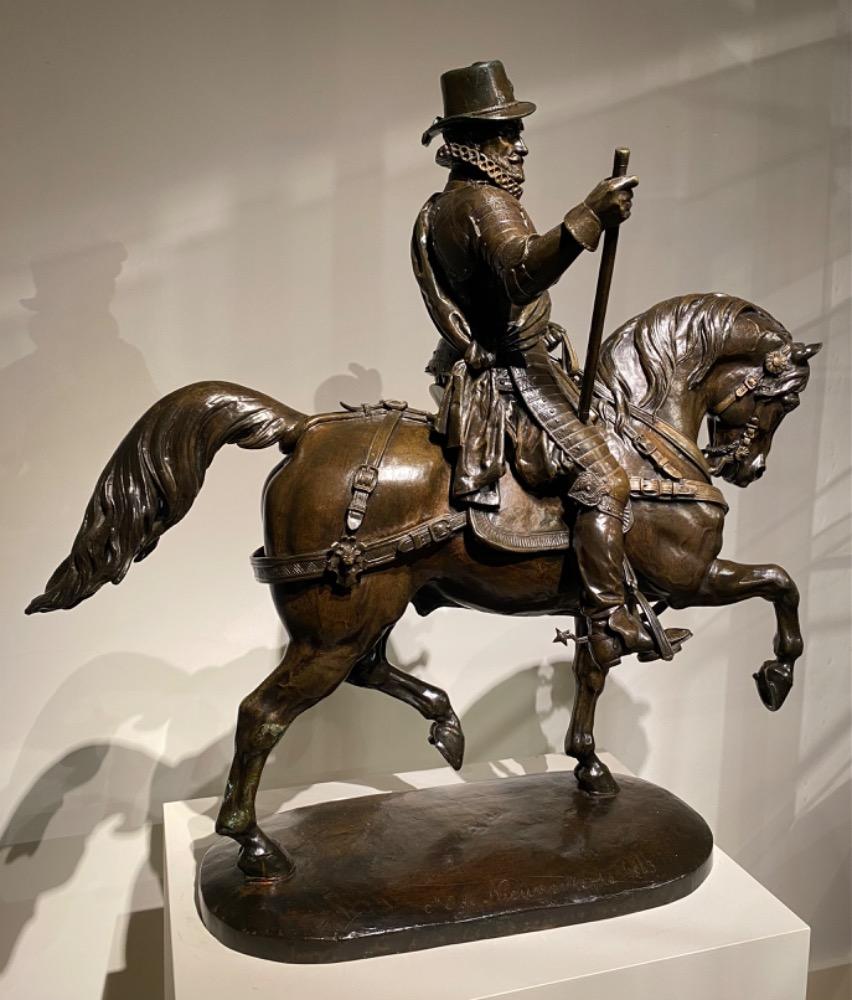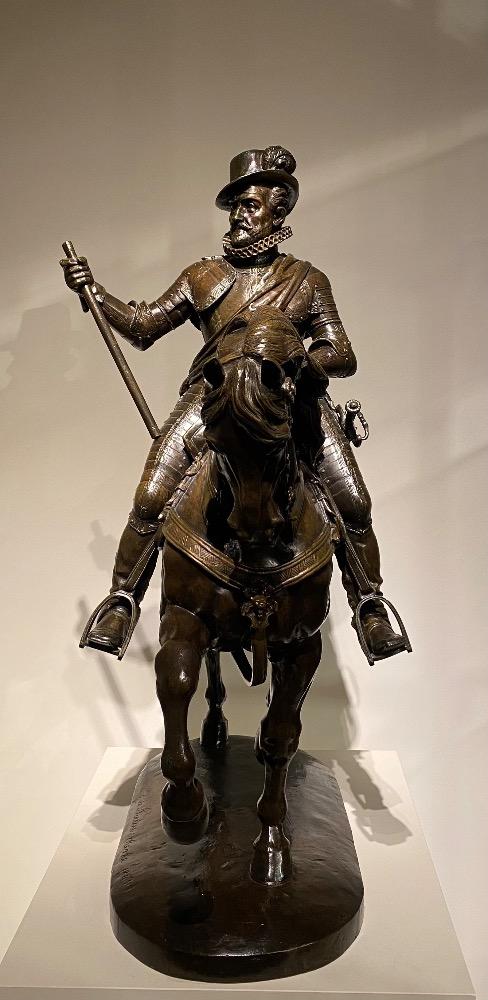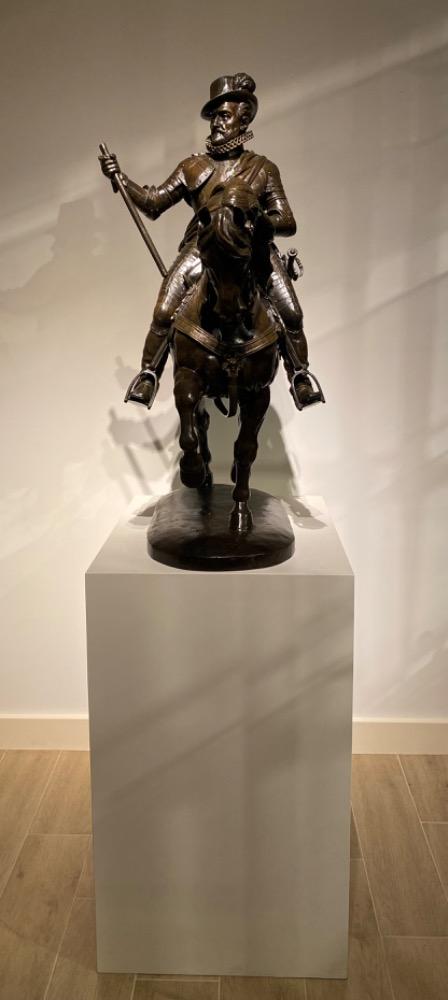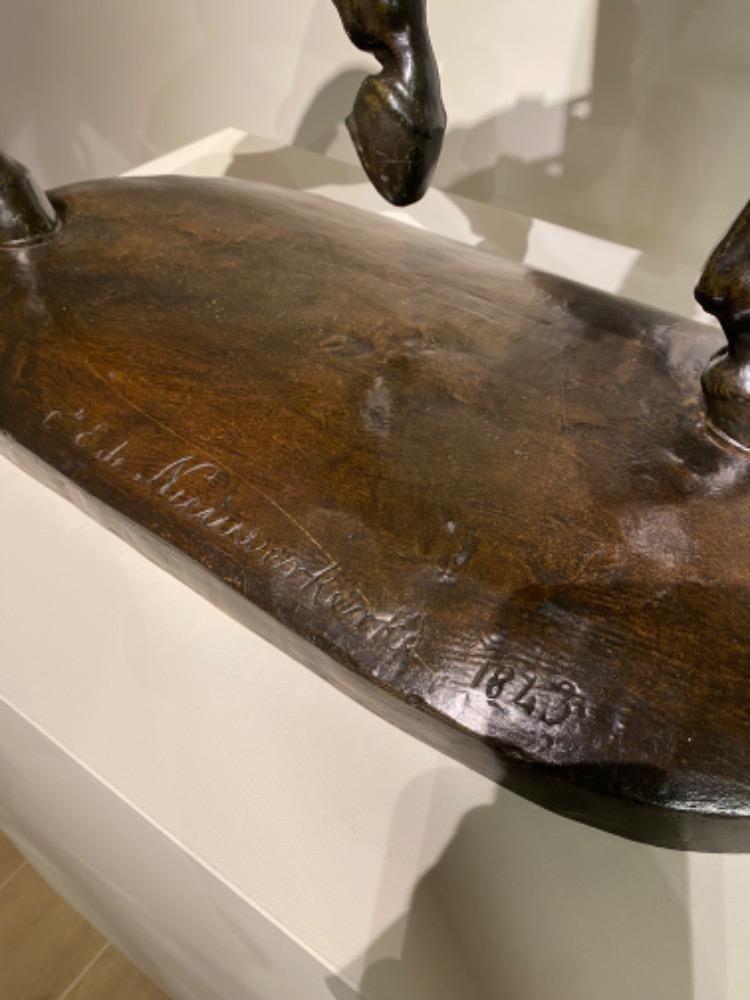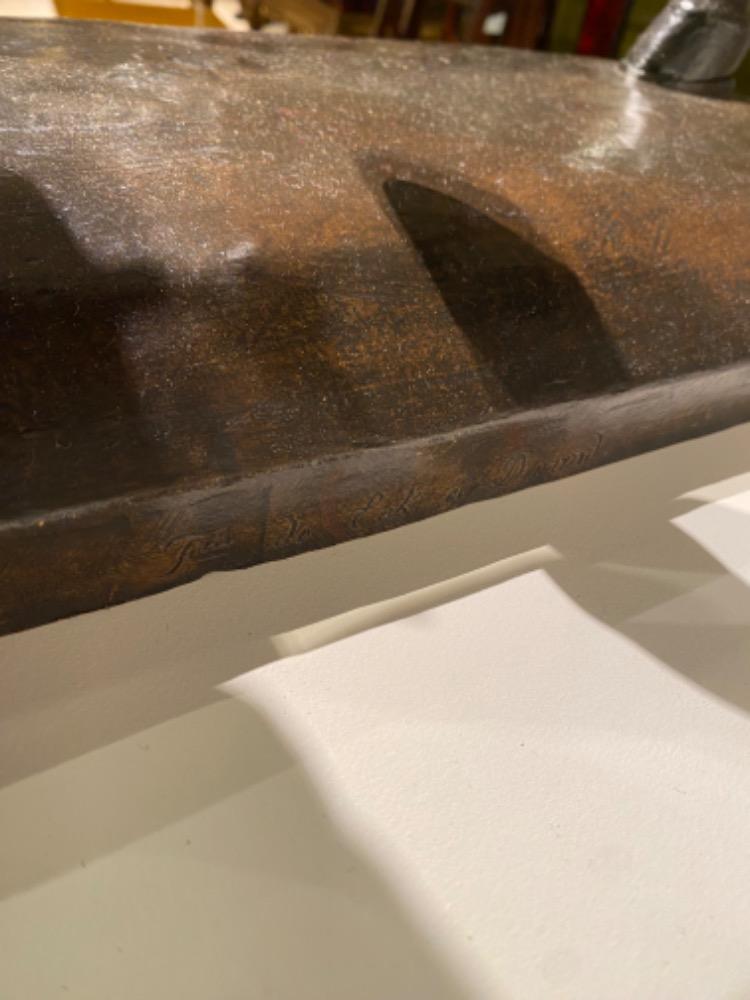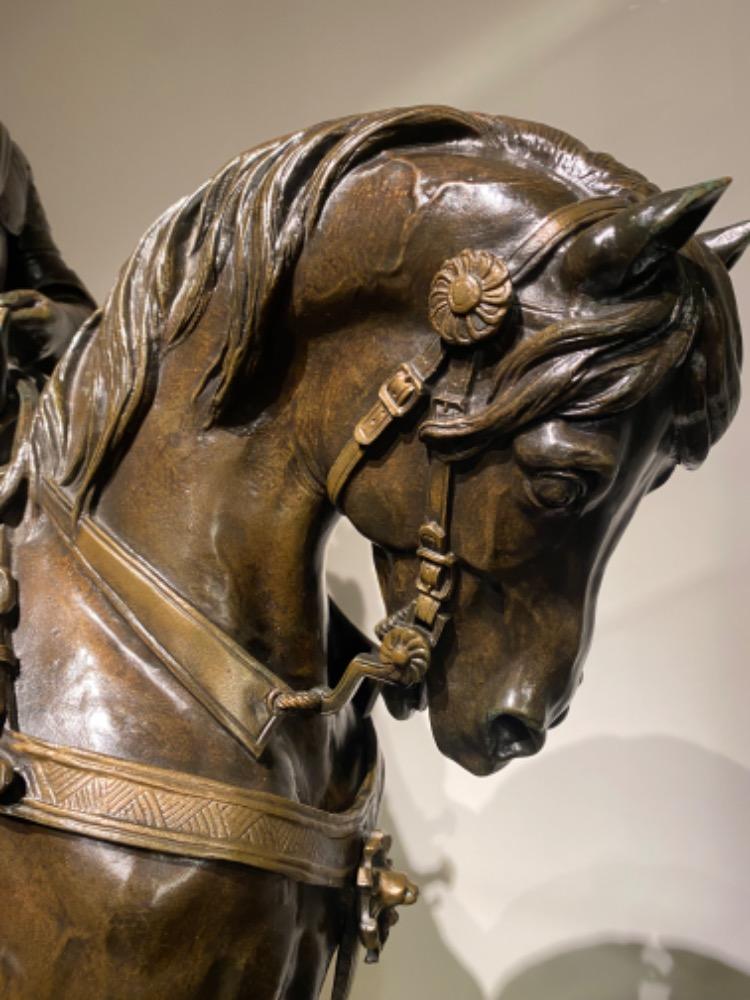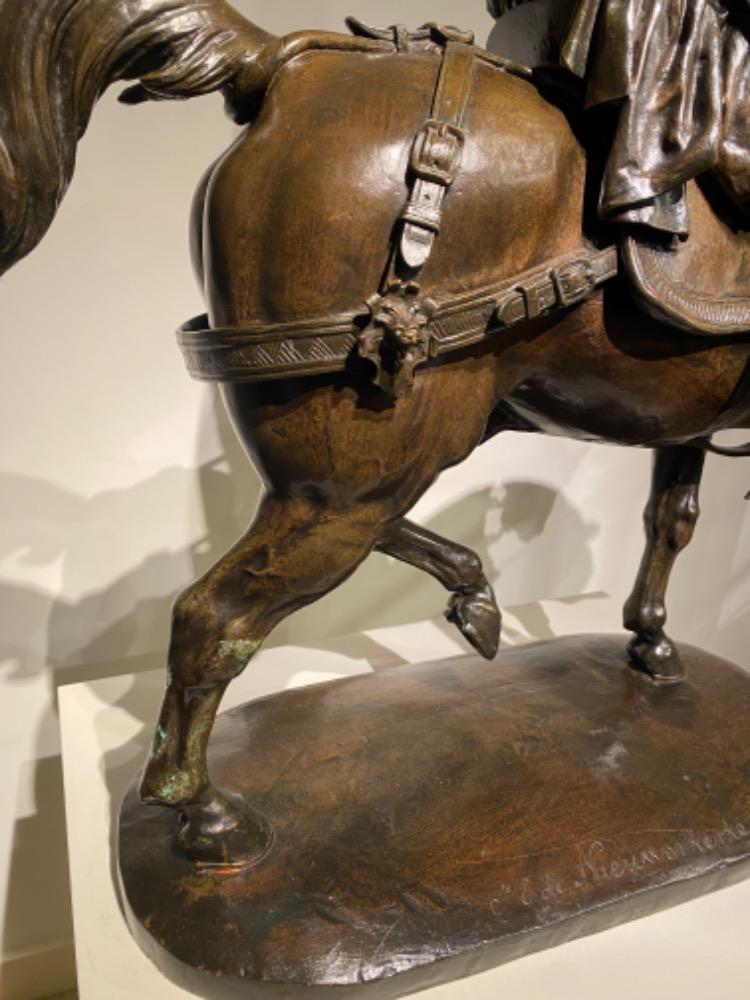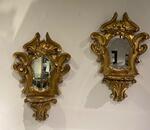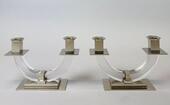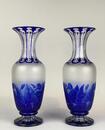|
Signed and dated, 1843.
The sculpture was commissioned by William II of the Netherlands and created
by the French sculptor Alfred Èmilien O'Hara Comte de Nieuwerkerke in 1845.
It was initially exhibited in Paris before being transported by sea to The
Hague, where it is still located in front of the Noordeinde Palace.
Alfred Èmilien O'Hara, both a sculptor and a high society figure, held
prestigious positions in the government, including the Louvre directorship
during the Second Empire. He was as well a collector, and some of his
treasures became part of Sir Richard Wallace's collection. During his
travels in Italy, he met the sculptor Carlo Marochetti, who was working on
the equestrian monument dedicated to Emmanuel Philibert of Savoy (completed
in 1838), situated in Piazza San Carlo in Turin. The similarities between
that equestrian monument and the one presented here are evident.
Reduced bronze versions were created from the monumental casting, and this
is one of the surviving examples, bearing the artist's signature and date
(1843) on the base.
It is a fine 19th-century casting. Noteworthy are the quality of the armor
and the detailed rendering of the horse, which present an extremely
realistic and intricate craftsmanship.
While drawing inspiration from Renaissance models of Giambologna and his
school, de Nieuwerkerke created a highly impactful and original work, which
can be seen even in the reduced bronze version presented here.
Dimensions:
H87 x W83 x D29cm.
H34.25 x W32.68 x D11.42 inch.
|












